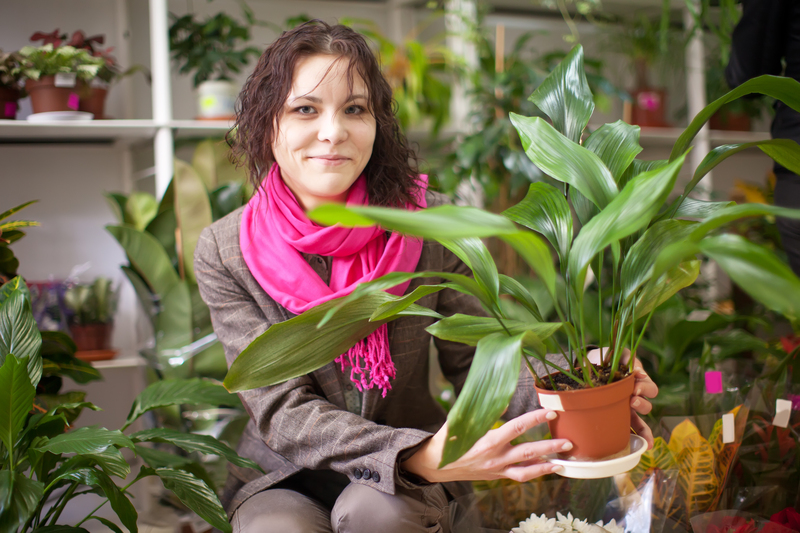Blossoming into Herb Expertise
Posted on 07/09/2025
Blossoming into Herb Expertise: Your Complete Guide to Mastery
Have you ever dreamed of recognizing every fragrant green sprout in your kitchen garden, deftly crafting remedies from fresh basil or dried chamomile, or impressing friends with your knowledge of oregano and its cousins? If so, you're undoubtedly on the path to blossoming into herb expertise.
This article is your 1,500+ word, SEO-optimized guide to moving from casual herb user to herb aficionado. Whether you're a gardener, home cook, health enthusiast, or budding botanist, we'll walk you through every step needed to cultivate knowledge, sharpen identification skills, and become a trusted source of herbal wisdom.
Why Develop Herb Expertise?
The world of herbs is vast, flavorful, and brimming with centuries-old wisdom. Gaining proficiency offers a wealth of benefits:
- Flavorful Cuisine: Understand which herbs pair best with specific dishes, elevating your cooking to gourmet levels.
- Health and Wellness: Learn about natural remedies and the science behind herbal supplementation.
- Sustainable Living: Embrace eco-friendly pest control, natural cleaning, and home remedies.
- Gardening Mastery: Propagate, cultivate, and harvest herbs in optimal ways for maximum potency.
- Heritage and History: Connect with traditions stretching across cultures and centuries.

The Foundation: What Are Herbs?
Before cultivating herb expertise, let's clarify what qualifies as an "herb." Botanically, an herb is a plant with savory or aromatic properties, often used for flavoring food, medicinal purposes, or fragrances.
Key distinctions:
- Culinary Herbs: Parsley, thyme, mint, and basil are classic kitchen staples.
- Medicinal Herbs: Echinacea, valerian, or St. John's Wort offer time-honored healing properties.
- Aromatic Herbs: Lavender and rosemary are prized for their essential oils and scents.
Interestingly, herbs differ from spices: herbs typically refer to leafy, green plant parts, while spices derive from seeds, bark, roots, or fruit.
Step One: Cultivating Your Learning Ground
1. Start With the Classics
To blossom into a true herb expert, focus on a core group of versatile, easy-to-grow herbs:
- Basil: Sweet, pungent, essential for Italian cuisine.
- Rosemary: Woody, aromatic, ideal for roasts.
- Parsley: Mild, fresh, popular garnish.
- Thyme: Earthy, subtle, great for soups and stews.
- Mint: Refreshing, cooling, lovely in desserts and teas.
By growing or buying these, you'll gain deep, hands-on familiarity with their characteristics and uses.
2. Grow Your Own Herbs
There's no substitute for firsthand experience. If you have access to a garden (or even a sunny windowsill), start by planting your own herbs. This encourages daily interaction--watering, pruning, smelling, and eventually tasting.
- Use well-drained soil and pots with good ventilation.
- Place them in spots with strong sunlight (6+ hours per day).
- Harvest regularly to encourage healthy growth and flavor.
Document the growth phases with photos or notes to sharpen identification abilities and understand seasonal changes.
Diving Deeper: Comprehensive Herb Identification
Leaf Shape, Color, and Texture
Herb experts learn to distinguish plants at a glance by examining:
- Leaf Shape: Is it needle-like (rosemary), lance-shaped (sage), or round (oregano)?
- Color Variations: Note subtle shades, variegation, or glossiness.
- Surface Texture: Is the leaf fuzzy, waxy, or smooth?
Smell and Flavor Profiles
Crush a small leaf between your fingers to release aromatic compounds. Top herbalists know:
- Minty families: Cooling menthol (mint, basil, sage)
- Lemony hints: Lemongrass, lemon verbena
- Pungency: Strong or spicy note (oregano, thyme)
Flowering Patterns and Growth Habits
Understanding whether an herb is an annual or perennial, its spreading tendencies, and when it flowers will bolster your recognition skills.
Beyond the Basics: Exploring Herb Varieties and Families
Key Herb Families and Telling Them Apart
Botanists organize herbs into distinct families. Take time to master these major groups:
- Lamiaceae (Mint Family): Includes mint, basil, thyme, sage, rosemary, and oregano. Square stems and aromatic oils are hallmarks.
- Apiaceae (Carrot Family): Encompasses parsley, dill, fennel, and coriander. Look for feathery leaves and umbrella-shaped flower heads.
- Asteraceae (Daisy Family): Features chamomile, tarragon, and calendula. Daisylike blossoms are common.
Tip: Identify new herbs by comparing their features to known family traits.
Uncommon Herbs Worth Knowing
- Lovage: Tastes like celery, but more intense.
- Shiso (Perilla): Popular in Asian cuisine, purple or green varieties.
- Borage: Edible flowers and leaves, cucumber-like taste.
- Hyssop: Slightly bitter, beautiful blue flowers, traditional medicinal use.
- Salad Burnet: Nutty, cucumber flavor, perennial.
Practical Skills for Becoming an Herb Specialist
Harvesting for Maximum Potency
Harvest at the right time to capture the essence of your herbs:
- Morning is best—aromatic oils are most concentrated after dew dries.
- Before flowering—harvest leaves for culinary use before the plant sets blooms, as flavors can fade after flowering.
- Prune lightly—never take more than a third of the plant at once.
Drying and Preserving Herbs
- Air dry bundles in a cool, dark place.
- Use a dehydrator for herbs with higher moisture content (like basil).
- Freeze in ice cube trays with water or oil for instant flavor boosts.
- Store dried herbs in airtight jars away from light and heat.
Creating Herbal Blends and Remedies
Culinary Blends
Herbal experts love crafting signature blends, such as:
- Herbes de Provence: Thyme, rosemary, savory, marjoram, and lavender.
- Chimichurri: Parsley, oregano, garlic, vinegar, and olive oil.
- Gremolata: Parsley, garlic, and lemon zest.
Experiment with regional or international herb combinations to expand your flavor palette and impress at the dinner table.
Medicinal Infusions and Teas
Many herbalists prepare teas, tinctures, and salves for health support:
- Chamomile tea: Calming and aids digestion.
- Peppermint infusion: Refreshing, relieves minor stomach upset.
- Lemon balm tea: Mildly sedative, great for stress and sleep.
Note: Always research contraindications, especially if pregnant or on medication.
Herb Expertise in the Kitchen
A skilled herb expert knows the best ways to incorporate fresh and dried herbs into cuisine:
- Add fresh herbs at the end of cooking for brightness and maximum aroma.
- Use dried herbs earlier in the cooking process to allow flavors to infuse.
- Pair wisely: Basil with tomatoes, rosemary with lamb, tarragon with eggs and fish.
Experimenting and keeping a flavor journal will boost your confidence and creativity in the kitchen.
Advanced Herb Appreciation and Next-Level Tips
Exploring Global Herbal Traditions
World cultures offer a rich tapestry of herbal traditions:
- Chinese Medicine: Ginseng, astragalus, licorice root.
- Ayurveda: Holy basil (tulsi), ashwagandha, turmeric.
- European Folk Remedies: Elderflower, nettle, mugwort.
Study global approaches for a broader, more sophisticated herbal repertoire.
Scientific Resources and Continuing Education
- Botanical gardens and herbaria: Visit, volunteer, or take workshops.
- Online courses and certifications: Pursue structured learning from reputable herbalists.
- Books by experts: "The Complete Herb Book" by Jekka McVicar or "The Herbal Medicine-Maker's Handbook" by James Green.
- Join herbal societies: Network and share knowledge with fellow enthusiasts.
Critical Thinking and Sustainability
As your herbal expertise blossoms, develop a discerning eye:
- Rely on evidence-based research when trying new herbal remedies.
- Respect wild plants—never overharvest or disturb endangered species.
- Grow organically to minimize environmental impact and produce potent, healthy herbs.
Sharing Your Herb Enthusiasm
One of the pure joys of herbal mastery is sharing your discoveries:
- Host plant walks or workshops in your community.
- Write blog posts or social content with your favorite herbs and recipes.
- Create homemade gifts: Sachets, teas, infused oils, or spice mixes.

Common Pitfalls When Growing Into Herb Expertise
- Confusing toxic plants: Accidental ingestion can be harmful--always double-check species before consumption.
- Overusing potent herbs: Some, like sage or rosemary, should be used with care in high doses.
- Ignoring allergies: Even common herbs can trigger sensitivities in some people.
Blossoming into Herb Expertise: The Journey, Not the Destination
Becoming an herbal expert is a lifelong, rewarding journey. Plants are living, evolving teachers, and the botanist who sees them only as a means to an end misses the real magic. Dive in with curiosity and respect, try new varieties, experiment with unfamiliar preparations, and always keep your mind open to learning something new.
Are you ready to let your knowledge sprout and grow? Here's a quick roadmap to blossom into a true herb connoisseur:
- Start small and build confidence with a handful of classic herbs.
- Invest time in both reading and hands-on gardening.
- Expand your skills to identification, preservation, and use in kitchen and healing.
- Connect with community—share your knowledge and absorb new wisdom from others.
- Celebrate every new sprout on your path to herb mastery!
With dedication and passion, your journey to blossoming into herb expertise will not only enrich your plate and home, but connect you to the rhythms of nature and generations of plant lovers before you. Happy growing!

